#battle of vimy ridge
Text

The Observer's Lewis Gun mounted on Scarff Ring in a De Havilland No.4 Bomber. September 1917.
#World War One#The Great War#1918#1917#1916#1914#first world war#history#historical#historical photos#world history#canadian history#military history#british army#Indian History#war#military#somme#Battle of the Somme#france#belgium#the western front#vimy ridge#Battle of Vimy Ridge
62 notes
·
View notes
Text
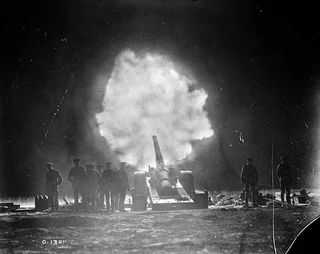
6-inch (150 mm) gun of the Royal Garrison Artillery behind Canadian lines, firing over Vimy Ridge at night.
36 notes
·
View notes
Photo

“Preaches To Legion On ‘Moral Heroism’,” Toronto Star. April 11, 1932. Page 22.
----
Vimy Day Church Parade Held at St. John’s
----
Oakville, April 11. - Assembling in the Central school grounds and led by the town band, the Oakville post of the Canadian Legion paraded to St. Jon’s United church last night, where Vimy Ridge anniversary was commerated in a service conducted by Rev. E. O. Seymour. Taking as his theme, ‘ Moral Heroism,’ he drew some striking analogies between the life of a soldier and the life of a Christian.
The choir rendered two anthems, ‘The Souls of the Righteous,’ and ‘The Heavens Are Telling,’ and Irven Fell and Charles Tuck sang ‘Jesus Saviour Pilot Me,’ as a duet.’
#oakville#vimy ridge#battle of vimy ridge#canadian legion#vimy ridge day#remembrance day#history of remembrance day#remembrance day in canada#canadian veterans#canadian expeditionary force#great depression in canada
0 notes
Text


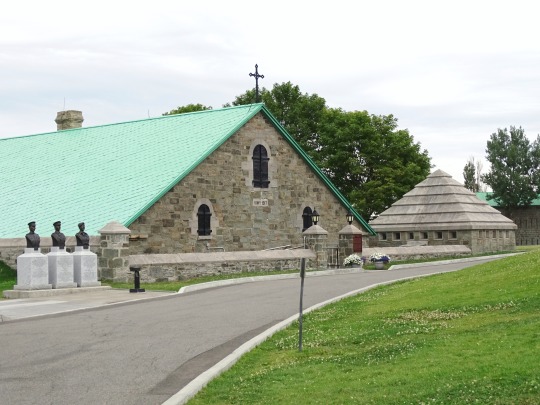
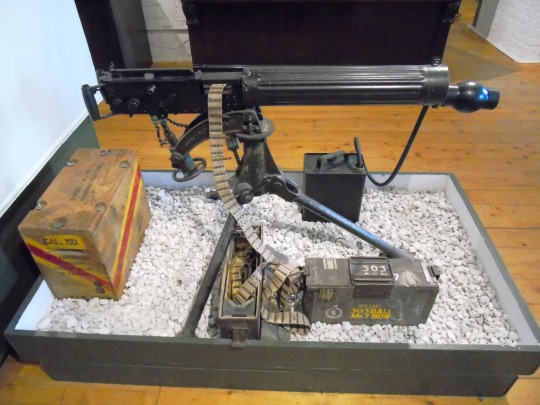



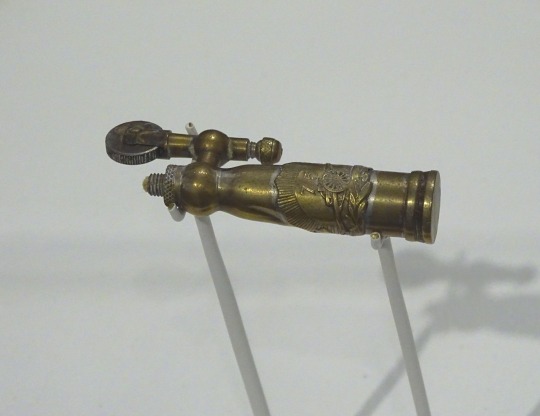
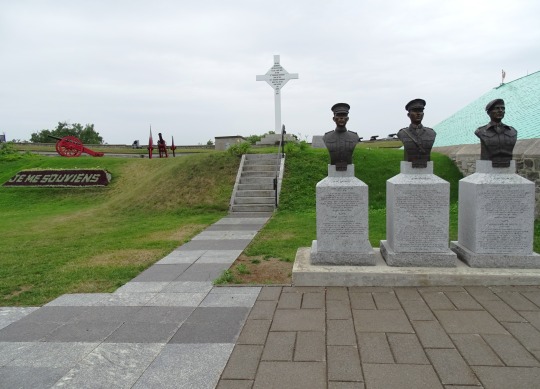


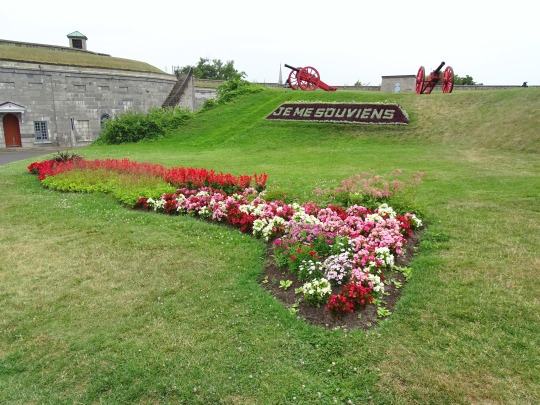
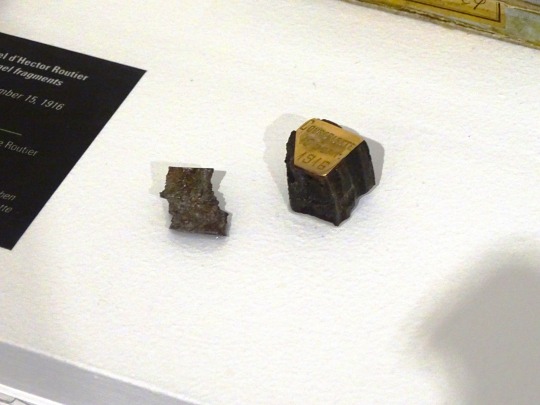
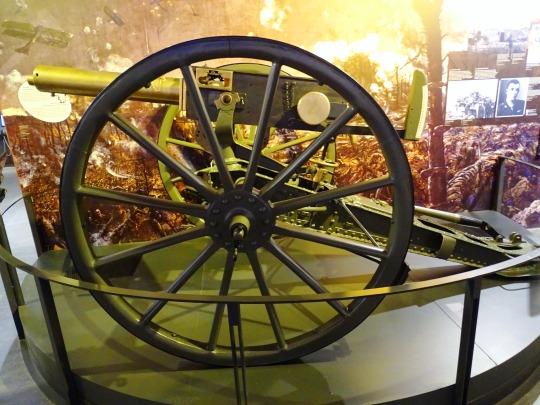
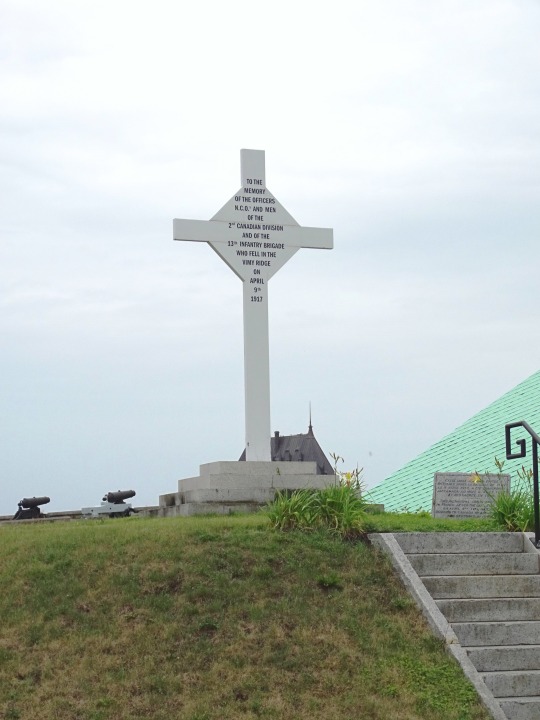
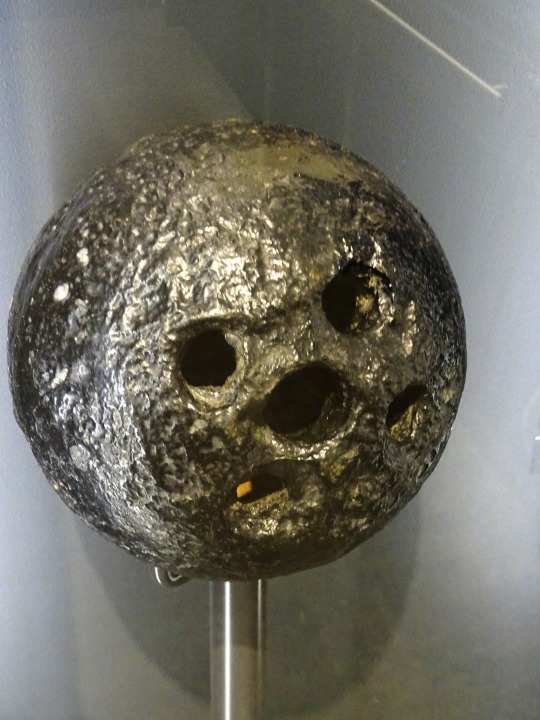

The Battle of Arras began with Canadian Corps executing a massive assault on Vimy Ridge on April, 9, 1917.
Vimy Ridge Day
Since 2003, Vimy Ridge Day has been observed on April 9 in Canada to honor and commemorate the Battle of Vimy Ridge, which took place during the First World War at Vimy Ridge, France, in 1917. The Canadian flag on Parliament Hill’s Peace Tower in Ottawa is required to be lowered to half-mast by law. Wreath-laying ceremonies are held at the Canadian National War Memorial in Ottawa, the Canadian National Vimy Memorial in France, and other locations around the country.
History of Vimy Ridge Day
The Victory of Vimy Ridge Battle was considered a historic moment in the country’s history. The victory was not easy to attain, as years of failed attempts, strategic planning, and preparation to regain Vimy Ridge were endured. The Ridge was under Germany’s control since 1914. Since then, around 150,000 British and French soldiers were sacrificed in the attempt to retake the ridge. The Germans secured their position with machine gun fires, barbed wires, and deep bunkers, making it difficult for any country to take over. Because of their remarkable achievements, Canadian troops gained a reputation as formidable and effective troops. However, the victory came at a horrific price, with over 10,000 people either murdered or wounded.
In April 1917, the Canadian Corps was given the order to seize Vimy Ridge. The heavily constructed seven-kilometer ridge in northern France provided a superb view of the Allied lines. Because earlier French attacks had failed with over 100,000 dead, the Canadians would be attacking over an open graveyard. Canadian and British artillery blasted German positions on the ridge before a week to the battle, killing and torturing defenders. With almost 1,000 artillery pieces putting down withering, supporting fire, the Canadian soldiers would be strongly backed when they went into the fight.
The four divisions of the Canadian Corps fought bravely together for the first time during the Vimy Ridge Battle. Around 15,000 soldiers initiated the battle at 5:30 a.m. on April 9, 1917, marching under a slow-moving bombardment of almost 1000 heavy guns. Most objectives were met on time, and by afternoon, most of the ridge had been taken, except for ‘The Pimple’, a high position on the ridge’s north end, where defenders held out until April 12. By the 12th of April, the Canadians had captured all of their objectives as well as 4,000 prisoners. Vimy Ridge was captured by the Canadians. During the four-day combat, 3,598 Canadians died and 7,000 were injured, making this victory a costly one.
Vimy Ridge Day timeline
1914 German Capture
The Germans gain control of Vimy Ridge at the beginning of World War I.
1917 The First Attack
The Battle of Vimy Ridge begins in the early morning at 5:30 a.m on April 9.
1917 The End of the Battle
The Battle of Vimy Ridge comes to an end on April 12 with a victory for the Canadian Corps.
1918 Canada’s Last Battle in World War I
The Canadian Corps defeats the last German defensive lines with the Vimy tactics on November 1.
Vimy Ridge Day FAQs
What did the Battle of Vimy Ridge reveal?
The triumph of the Canadians at Vimy Ridge revealed that no position was unconquerable to a well-planned and executed attack. This victory had a significant impact on allied planning.
How many lives were lost at Vimy Ridge?
The enormous victory came at a high cost of 3,598 Canadian lives and approximately 7,000 wounded Canadian soldiers.
Does Canada own Vimy Ridge?
Even though the ridge is located in France, it has belonged to Canada as a Canadian National historic site since 1997.
How to Observe Vimy Ridge Day
Wear a Vimy pin
Share your story
Lay wreaths
Canadian people commemorate this day by wearing Vimy pins. The Vimy pin should be worn on the left-hand side of the lapel buttonhole position.
On this commemoration day, we could share our knowledge and stories we heard about the battle and stories with others. Take this opportunity and spread your knowledge about the battle!
The Late Soldiers can be honored by wreath-laying ceremonies. Community members, Veterans, and the public lay wreaths at the National War Memorial to pay their respects.
5 Amazing Facts About The Battle Of Vimy Ridge
Land for memorial
Dream memorial
The great endeavor
A historic site
Standing tall on the hill
The French government awarded the people of Canada perpetual use of the land for the battlefield park that houses the Canadian National Vimy Memorial in 1922.
Walter Seymour Allward, a Canadian artist and architect, constructed the Vimy memorial — he once told a group of friends that the design's form came to him in a dream.
On July 26, 1936, it was dedicated by King Edward VIII, in the presence of President Albert Lebrun of France and 50,000 or more Canadian and French soldiers and their families, after an eleven-year construction period costing $1.5 million.
Sheila Copps, then Minister of Canadian Heritage, recognized the Canadian National Vimy Memorial as a Canadian National Historic Site on April 10, 1997.
The National Vimy Memorial overlooks the 1917 battlefield in Canada and is located on Hill 145.
Why Vimy Ridge Day is Important
It honors bravery
The winning tactics
It celebrates unity
Although many lives were lost in the battle, it still stands as an important historic moment in the history of Canadian Bravery. It is celebrated as a remembrance of the bravery of the soldiers.
The Canadian Corps went through a lot of training before the battle. The tactics framed by the corps were so clever that they helped win other battles also.
All four Canadian corps fought together in this battle as an alias of the British to regain Vimy Ridge. This celebrates unity!
Source
#Royal 22e Régiment Museum#Vimy Ridge Cross#Citadelle of Quebec#travel#Quebec City#Québec#The Road to Vimy and Beyond#Fort George#Halifax#Halifax Citadel National Historic Site of Canada#Nova Scotia#summer 2018#2015#WWI#World War One#Army Museum Halifax Citadel#Battle of Arras#started#9 April 1917#anniversary#Canadian history#World War I#WWOne#Vimy Ridge Day#original photography#vacation#tourist attraction#cityscape#architecture#landmark
1 note
·
View note
Text

Canadian machine gunners positioning themselves in shell holes during the Battle of Vimy Ridge, 1917 (WW1).
#canada#canadian history#history#military history#sketch#traditional drawing#traditional sketch#warfare#world war 1
43 notes
·
View notes
Text
i’m thinking about matt’s childhood crush on gil getting obliterated within the first few months of entering the great war. matthew getting catapulted into horrors he’s never seen at the hands of the enemy and it wrecks him. it changes him permanently, the same as ludwig. it’s a wake up call and a coming of age.
thinking how matt would inevitably meet gil in battle, possibly vimy ridge. captured the fort and bursts in, sees gilbert who’s being backed against a wall and goes cold. and even if gil doesn’t recognize him personally it’s obvious who this is. all this happening in an instant, gil opens his mouth but matt has his gun raised and just puts a bullet through his head. then two, then three and four. nothing in his eyes. and turns on his heel to go rally his men
#prucan#early prucan#this war turns him into the devil for awhile#he dreamed of marrying gil ever since about the mid 1700s when he was only about 12 and would see gil at lavish parties#his little older man crush. i’m gonna get big and marry him one day!!!#his feelings disappear at the start of the war and don’t really come back until like the 70s#it’s a lot :(#historical hetalia
41 notes
·
View notes
Text

The Canadian National Vimy Memorial honours all Canadians who served during the First World War. The Memorial bears the names of those who died in France with no known grave. It is located at the site of Canada’s victory during the Battle of Vimy Ridge.
5 notes
·
View notes
Text
reminder to canadians that the "battle of vimy ridge" is minor part of the battle of arras and only mythologised for militarist-nationalistic reasons
4 notes
·
View notes
Text


On the morning of April 9th 1917, the battle of Vimy ridge began. For the first time in the war all 4 Canadian divisions were present. After flew days of fight on April 12th, Canada would successfully capture Vimy Ridge, although it did come at a price. There were around 10,600 casualties with around 3,598 being killed. This battle to this day is seen as the moment Canada emerged as a country and not an another under Britain.
though it would be neat to not only draw from that one famous photo, but to also redraw my first Vimy art I made, I definitely improved a lot from 2018.
6 notes
·
View notes
Note
In Canada the War of 1812 is treated as one of the most important wars we fought in. It's funny looking at how it's viewed differently by the British, Americans. and Canadians. A sideshow, barely remembered, and on the same level as the Battle of Vimy Ridge.
Well, it's not that it's "barely remembered," it's largely seen as just something that kinda sorta happened and the details are largely sketchy. It was a big deal for the national anthem, and then just drifts into the background as history focuses more on exploring the Louisiana Purchase and westward expansion as it builds to the Civil War.
Thanks for the contribution, George.
SomethingLikeALawyer, Hand of the King
14 notes
·
View notes
Text
1916-Battle of Fromelles:

British and Australian troops attack German trenches as part of the Battle of the Somme.
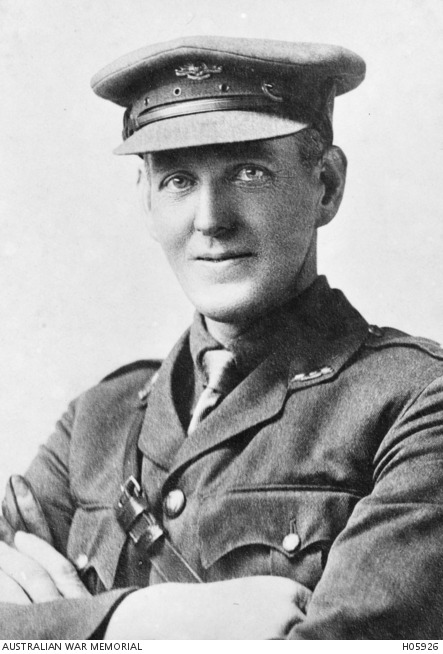
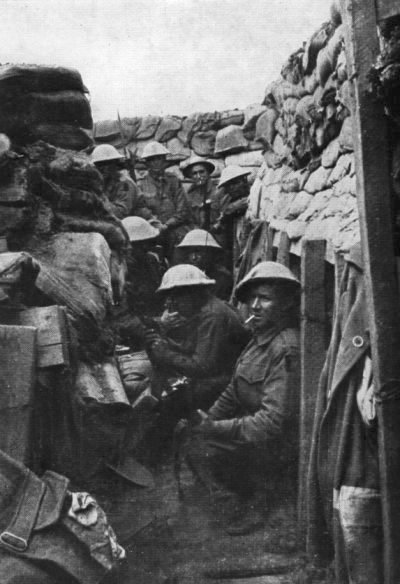
The operation was conducted by XI Corps (Lieutenant-General Richard Haking) of the First Army with the 61st (2nd South Midland) Division and the 5th Australian Division, Australian Imperial Force (AIF) against the 6th Bavarian Reserve Division, supported by the two flanking divisions of the German 6th Army. Preparations for the attack were rushed, the troops involved lacked experience in trench warfare and the power of the German defence was significantly underestimated, the attackers being outnumbered 2:1. The advance took place in daylight, on a narrow front, against defences overlooked by Aubers Ridge, with German artillery on either side free to fire into the flanks of the attack. Another attack by the 61st (2nd South Midland) Division early on 20 July was cancelled, after it was realised that German counter-attacks had already forced a retirement by the Australian troops to the original front line.


On 19 July, General Erich von Falkenhayn, head of Oberste Heeresleitung (OHL, the German army supreme headquarters) judged Fromelles to be the offensive he expected against the 6th Army. The attack gained no ground but inflicted some casualties; next day the failure was evident and a captured operation order from XI Corps revealed the limited nature of the operation. In 2012, a study of German records showed that no German division opposite XI Corps moved until four to nine weeks later; Falkenhayn sent divisions from the Souchez–Vimy area, 20 mi (32 km) south instead, which had been misinterpreted in earlier accounts. The attack was the début of the AIF on the Western Front and the Australian War Memorial described it as "the worst 24 hours in Australia's entire history". Of 7,080 BEF casualties, 5,533 were suffered by the 5th Australian Division; the Germans suffered 1,600–2,000 casualties and lost 150 prisoners.
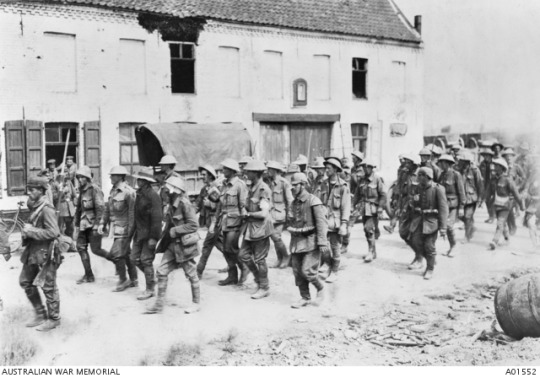
2 notes
·
View notes
Text

Officers of the 2nd Kings Shropshire Light Infantry with skulls excavated during the construction of trenches and dugouts at the ancient Greek site of Amphipolis, 1916.
#World War One#The Great War#1918#1917#1916#1914#first world war#history#historical#historical photos#world history#canadian history#military history#british army#Indian History#war#military#somme#Battle of the Somme#france#belgium#the western front#vimy ridge#Battle of Vimy Ridge
43 notes
·
View notes
Text

Canadian soldiers returning from Vimy Ridge.
34 notes
·
View notes
Photo







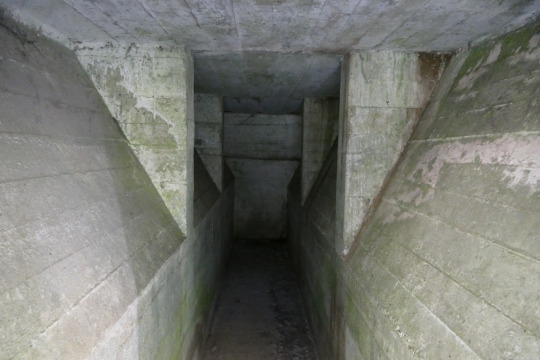
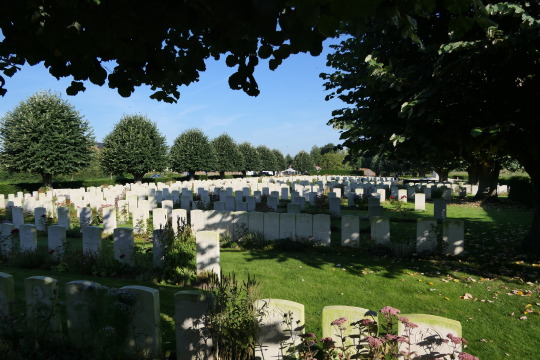

Essex Farm Cemetery
John McCrae Canadese arts
In Flanders Fields
In Flanders fields the poppies blow
Between the crosses, row on row,
That mark our place; and in the sky
The larks, still bravely singing, fly
Scarce heard amid the guns below.
We are the Dead. Short days ago
We lived, felt dawn, saw sunset glow,
Loved, and were loved, and now we lie
In Flanders fields.
Take up our quarrel with the foe:
To you from failing hands we throw
The torch; be yours to hold it high.
If ye break faith with us who die
We shall not sleep, though poppies grow
In Flanders fields.
John McCrae
Een van de meest aangrijpende herinneringen aan de Eerste Wereldoorlog is het ontroerende gedicht 'In Flanders Fields', geschreven door John McCrae, een Canadese legerdokter, na de dood van zijn goede vriend en landgenoot luitenant Alexis Helmer. Helmer kwam op 2 mei 1915 om het leven toen een granaat ontplofte tijdens de tweede Duitse gasaanval. Bij afwezigheid van een kapelaan leidde McCrae zelf de uitvaartdienst voor zijn vriend. Verdriet en het trauma van de oorlog inspireerden zijn gedicht.
Op dat moment was majoor John McCrae aan het werk in een velddressingstation op de weg tussen Ieper en Boezinge. Daar hield hij zich vooral bezig met de behandeling van slachtoffers van de Duitse gasaanvallen. Kort nadat hij het gedicht had geschreven, werd hij als Chief of Medical Services overgebracht naar een Canadees veldhospitaal in Frankrijk, waar de gewonden van de veldslagen van de Somme, Vimy Ridge, Arras en Passendale werden behandeld.
McCrae legde het vel papier weg waarop hij het gedicht had geschreven. Het zou misschien nooit zijn gepubliceerd als een collega-officier de aantekeningen van McCrae niet had gevonden en ze naar een aantal Londense tijdschriften had gestuurd. Het gedicht verscheen voor het eerst in het tijdschrift Punch en raakte meteen de harten van het Britse volk.
In de zomer van 1917 kreeg John McCrae aanvallen van astma en bronchitis, vrijwel zeker als gevolg van het inademen van chloorgas tijdens de Tweede Slag om Ieper. Op 23 januari 1918 werd McCrae ziek met een longontsteking en werd hij opgenomen in het ziekenhuis. Hij stierf vijf dagen later op slechts 46 jarige leeftijd. McCrae is begraven in Wimereux, ten noorden van Boulogne (Frankrijk).
John McCrae
One of the most poignant reminders of World War I is the moving poem, ‘In Flanders Fields’, written by John McCrae, a Canadian army doctor, following the death of his close friend and compatriot Lieutenant Alexis Helmer. Helmer was killed on 2 May 1915 when a shell exploded during the second German gas attack. In the absence of a chaplain, McCrae conducted the funeral service for his friend himself. Grief and the trauma of war inspired his poem.
At the time, Major John McCrae was working in a field dressing station on the road between Ypres and Boezinge. While there, he was mainly involved in treating victims of the German gas attacks. Soon after he wrote the poem, he was transferred, as Chief of Medical Services, to a Canadian field hospital in France, where the wounded from the battles of the Somme, Vimy Ridge, Arras, and Passchendaele were treated.
McCrae discarded the sheet of paper on which he had written the poem. It might never have been published but for a fellow officer who found McCrae’s notes and sent them to a number of London magazines. The poem first appeared in the magazine Punch and immediately touched the hearts of the British people.
In the summer of 1917, John McCrae suffered attacks of asthma and bronchitis, almost certainly as a consequence of inhaling chlorine gas during the Second Battle of Ypres. On 23 January 1918, McCrae fell ill with pneumonia and was admitted to hospital. He died five days later at only 46 years of age. McCrae is buried in Wimereux, north of Boulogne (France).
Het verhaal van Joe Strudwick, de jongst gesneuvelde militair.
Joe werd geboren op woensdag 14 februari – vandaar zijn voornaam Valentine – 1900 in Falkland road, Dorking, Surrey. Hij was de tweede zoon van Jesse Strudwick, een tuinier en Louisa Fuller, wasvrouw van beroep. In totaal had hij twee stiefzussen (uit het eerste huwelijk van zijn vader), drie broers en twee zussen. Na zijn beperkte opleiding op de school van St. Paul’s in zijn buurt, ging hij werken als landbouwersknecht en bij een oom die kolenhandelaar was. Hij werd beschreven als ‘groot en goed gebouwd’.
Hij meldde zich als vrijwilliger aan in Lambeth, januari 1915 toen hij dus nog maar 14 was! Het is niet duidelijk hoe hij erin slaagde om zijn echte leeftijd te verdoezelen. Na zijn opleiding vertrok hij met het 8ste bataljon van de Riflebrigade (ook genoemd the Prince Consort´s Own) naar Frankrijk op woensdag 19 mei 1915. Op het einde van die maand kreeg hij al praktijkopleiding met het regiment van de ‘North en South Staffordshires’ in de frontlinies van de Ploegsteertsector. (Zijn bataljon is toegevoegd aan de 1/5th en 1/6th North and South Staffordshire, 46 North Midland Division – 137th Brigade). Zijn eerste opdracht voerde hij uit op 7 juni bij St. Elooi. Maar kort daarna werd hij al gewond en naar Engeland teruggestuurd om te herstellen in Sheerness, Kent. Hij heeft door zijn verblijf in Engeland waarna hij pas op 12 augustus terugkeert, de verschrikkelijke gevechten rond Bellewaarde en het Hooge niet moeten meemaken (16/6/1915 Bellewaarde Ridge, 19/7/1915 Hooge Crater mijn, 30-31/7/1915 eerste aanval met vlammenwerper en 9/8/1915 mijnkrater terug heroverd).
Op woensdag 12 augustus keerde hij terug naar de ‘Ypres salient’ waar hij zich opnieuw voegde bij wat er nog overbleef van het 8ste bataljon. Het bataljon had immers zware verliezen geleden – 19 officieren en 469 manschappen –- op 30 juli bij Hooge. Via zijn makkers in zijn peloton kwam hij gauw genoeg te weten wat het droevige lot was geweest van vele vrienden bij de aanval op Hooge. Zijn eerste taak was nu om karweien uit te voeren bij het kanaal van Ieper naar Boezinge. Daarna keerde hij terug naar de frontlinies bij Potyze op 23 augustus. Begin september was hij tijdens zijn dienst getuige van een hevig luchtgevecht boven de Britse frontlijn, waarbij het Britse vliegtuig werd neergehaald en te pletter stortte in Duits gebied. Op 6 september werd hij afgelost en naar ‘Ginger Bread Chateau’ (kasteel van de Potyze?) gebracht, waar hij door een omnibus werd opgepakt en naar Watou gevoerd om daar te rusten, te oefenen en karweien uit te voeren.
Dat stemde hem tevreden omdat hij eindelijk een warm bad kon nemen en vers ondergoed aantrekken! In Poperinge kon hij ook voor even genieten van andere verstrooiing samen met vrienden. Op 6 september wordt zijn brigade afgelost en naar “Ginger Bread Chateau” en verder naar Watou. In de War Diary van 9/9/1915 (zie afbeelding onder) staat dat er een “zorgvuldige” medische inspectie was en 35 niet fit genoeg waren voor verdere dienst, er 15 leden aan ‘nervous breakdown” en er 10 anderen waren jonger dan 18 jaar. Bijgevolg, Strudwick was niet de enige in dit bataljon die door de mazen van het net was geglipt.
Op 13 september marcheerde hij naar Poperinge van waaruit hij per trein naar ‘Ypres Asylum’ (station van Ieper) werd gebracht en van daar naar hun kampement waar ze in reserve afwachtten. De volgende morgen kreeg hij karweien die de eerste twee weken zouden in beslag nemen. Daarna werd hij op 28 september naar de loopgraven gestuurd bij ‘Bellewaerde farm’ (Hooge). In deze periode werd Ieper en de omgeving van het Hooge en Bellewaarde Farm hevig gebombardeerd. De afgrijselijke taferelen die hem daar opwachtten, werden nog versterkt door een weerzinwekkende geur van ontbindende lijken. De loopgraven waren in een verschrikkelijke toestand, volledig ondergelopen en fel beschadigd na de voorgaande gevechten.
In de War diary van 23/9/1915 lezen we: Bn bivouacked. Refitting and reorganising … Received to send back to Engeland men under 17 years of age. Waarschijnlijk het gevolg van het medisch onderzoek hierboven vermeld. Hier weer de vraag: Waarom bleef Strudwick?
War diary 6/10/1915: bataljon wordt afgelost en “A general feeling throughout the Bn that the 14th Div. has had more than its share of this unpleasant salient. Men have lost confidence and do not show themselves at their best”. (“Een algemeen gevoel overal in het bataljon dat de 14de div. meer dan zijn aandeel van deze onaangename salient heeft gehad. De mannen hebben hun vertrouwen verloren en vertonen zich niet op hun best”.)
En dan verder op 11/10/1915: een steeds groter probleem is hoe er moet omgegaan worden met mannen in de loopgraven waarvan de zenuwen het dreigen te begeven. Hierbij rijst de vraag hoe Strudwick hiermee omging?
Tijdens de maand november en december verblijven ze alternerend in rustkampen of staan ter beschikking van o.a. de 6th Division voor werken aan de frontlinie in de omgeving van het Ieper-IJzer kanaal. Ondertussen blijven de artillerie van de machinegeweren aan beide zijden zeer actief. Niet alleen de frontlinies krijgen hun deel artillerievuur te verwerken maar ook het achterland. Er zijn geen belangrijke acties of aanvallen en het is een zogezegde rustige periode maar als we de slachtoffers bekijken voor de periode van 1 november tot 17 december: 2 officieren gedood en 10 gewond. Bij de manschappen vielen er 81 doden en 228 gewonden. Eind december gaat de 14th Div. op rust in Frankrijk om dan begin januari 1916 terug te keren naar de omgeving van het kanaal.
Voor de periode van december tot januari 1916 zijn blijkbaar de War Diary voor het 8th Bn niet voorhanden of verloren/vernietigd. Uit het divisiedagboek kunnen we opmaken dat de divisie het gebied van La Belle Alliance, Frascati, Hill Top Farm, Noordhof farm en Belmont Farm bezetten. (Zie boven: uittreksel uit loopgravenkaart St Julien 28 N W 2 met deze gebieden omcirkeld).
Uit het dagboek blijkt verder dat ze dagelijks onder Duits artillerievuur lagen. Verder zijn het rustige dagen. Als je het aantal slachtoffers bekijkt (uit de lijst met slachtoffers als bijlage bij het dagboek) blijkt dat er in de 41st Infantry Brigade, waartoe 8th Bn Rifle Brigade behoort, er tussen 1 januari en 14 januari 1916, 286 slachtoffers vallen (6 officieren en 280 manschappen) Op 14 januari 1916 is dat één officier en 16 manschappen. Strudwick is één van de doden.
The Dorking Advertiser publiceerde na zijn dood het volgende op zaterdag 22 januari 1916: (vrij vertaald)
Nog een soldaat uit Dorking is eervol gesneuveld voor zijn vaderland.
Soldaat Valentine Joe Strudwick van het 8ste Rifle Brigade trad in dienst 12 maanden geleden, en op de dag van zijn overlijden op 14 januari had hij de leeftijd van 16 jaar nog niet bereikt, daar hij geboren was op Valentijnsdag 1900. Zijn moeder zou hem natuurlijk nog een paar jaar liever niet in het leger gezien hebben, maar de jonge Strudwick had daar geen oren naar – een mooi voorbeeld voor ouderen die zich nog niet aangemeld hebben en misschien een verwijt!
Na slechts zes weken opleiding werd hij naar Frankrijk gestuurd. Al gauw verloor hij twee kameraden die naast hem stonden – allebei op slag dood. Hij was daardoor zo geschokt en bovendien ook het slachtoffer van een gasaanval, dat hij voor drie maanden opgenomen werd in het ziekenhuis van Sheerness. Na herstel vervoegde hij zijn regiment en deze week dan kreeg zijn moeder het volgende bericht van zijn commandant, gedateerd op 15 januari:
Het spijt me ten zeerste u te moeten informeren dat uw zoon gedood werd door een granaatinslag op 14 januari. Hij was op slag dood en heeft niet geleden. Zijn lichaam werd door een aantal kameraden gebracht naar een kleine begraafplaats achter de linies waar het deze morgen eervol begraven werd. Een kruis wordt gemaakt en zal spoedig op zijn graf geplaatst worden. Rifleman Strudwick werd gerespecteerd door zijn kameraden en officieren en het spijt ons ontzettend om zulk een goede soldaat te moeten verliezen. Van hun kant én de onze bied ik u onze oprechte blijken van medeleven aan.
De overledene was mevrouw Strudwick’s tweede overlevende zoon en haar verdriet is des te groter daar zij hem niet meer had kunnen zien sedert hij in dienst trad. Ze heeft een tweede zoon in de Royal Field Artillery.
De jonge Strudwick was een oud-leerling van St Paul’s.
De oudere broer, Jesse Strudwick, regimentsnummer 121109 werd uit het leger ontslagen op 3 juli 1916 om medische reden (ziekte). Joe ontving de Victory Medal, de British War Medal en de 1915 Star Medal. Hij ligt begraven op Essex Farm Cemetery In Plot I Rij U. Op zijn grafsteen staat als epitaaf: “Niet uit onze herinneringen, noch verstoken van onze liefde.” (“Not gone from memory or from love”). Hij wordt ook herdacht op het Dorking oorlogsmonument en de namenlijst (Roll of Honour) van St. Paul’s en St. Martin’s Parish Churches.
9 notes
·
View notes
Photo

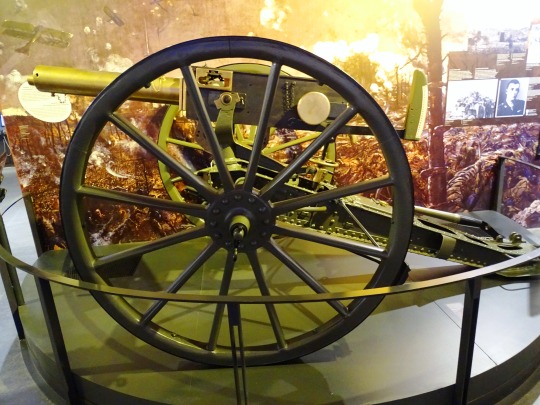
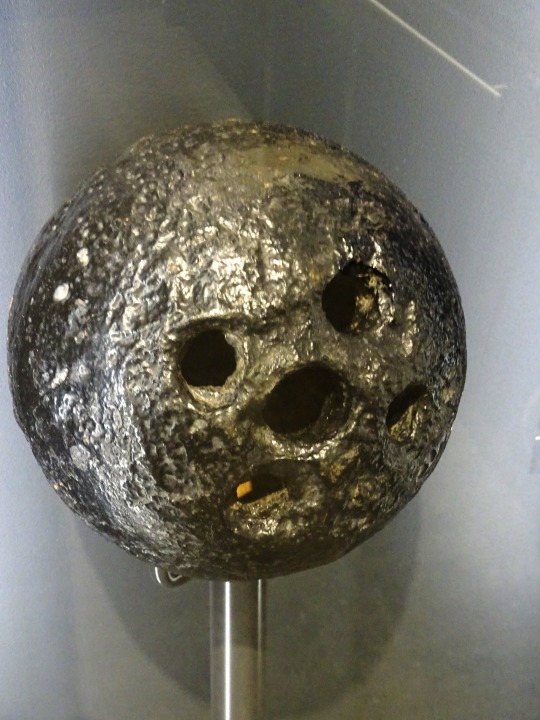






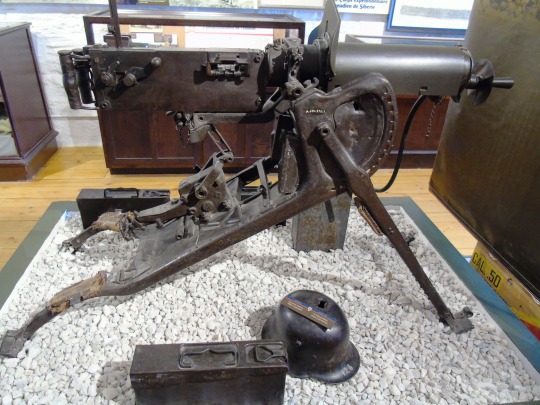
The Battle of Arras began with Canadian Corps executing a massive assault on Vimy Ridge on April, 9, 1917.
Vimy Ridge Day
Since 2003, Vimy Ridge Day has been observed on April 9 in Canada to honor and commemorate the Battle of Vimy Ridge, which took place during the First World War at Vimy Ridge, France, in 1917. The Canadian flag on Parliament Hill’s Peace Tower in Ottawa is required to be lowered to half-mast by law. Wreath-laying ceremonies are held at the Canadian National War Memorial in Ottawa, the Canadian National Vimy Memorial in France, and other locations around the country.
History of Vimy Ridge Day
The Victory of Vimy Ridge Battle was considered a historic moment in the country’s history. The victory was not easy to attain, as years of failed attempts, strategic planning, and preparation to regain Vimy Ridge were endured. The Ridge was under Germany’s control since 1914. Since then, around 150,000 British and French soldiers were sacrificed in the attempt to retake the ridge. The Germans secured their position with machine gun fires, barbed wires, and deep bunkers, making it difficult for any country to take over. Because of their remarkable achievements, Canadian troops gained a reputation as formidable and effective troops. However, the victory came at a horrific price, with over 10,000 people either murdered or wounded.
In April 1917, the Canadian Corps was given the order to seize Vimy Ridge. The heavily constructed seven-kilometer ridge in northern France provided a superb view of the Allied lines. Because earlier French attacks had failed with over 100,000 dead, the Canadians would be attacking over an open graveyard. Canadian and British artillery blasted German positions on the ridge before a week to the battle, killing and torturing defenders. With almost 1,000 artillery pieces putting down withering, supporting fire, the Canadian soldiers would be strongly backed when they went into the fight.
The four divisions of the Canadian Corps fought bravely together for the first time during the Vimy Ridge Battle. Around 15,000 soldiers initiated the battle at 5:30 a.m. on April 9, 1917, marching under a slow-moving bombardment of almost 1000 heavy guns. Most objectives were met on time, and by afternoon, most of the ridge had been taken, except for ��The Pimple’, a high position on the ridge’s north end, where defenders held out until April 12. By the 12th of April, the Canadians had captured all of their objectives as well as 4,000 prisoners. Vimy Ridge was captured by the Canadians. During the four-day combat, 3,598 Canadians died and 7,000 were injured, making this victory a costly one.
Vimy Ridge Day timeline
1914 German Capture
The Germans gain control of Vimy Ridge at the beginning of World War I.
1917 The First Attack
The Battle of Vimy Ridge begins in the early morning at 5:30 a.m on April 9.
1917 The End of the Battle
The Battle of Vimy Ridge comes to an end on April 12 with a victory for the Canadian Corps.
1918 Canada’s Last Battle in World War I
The Canadian Corps defeats the last German defensive lines with the Vimy tactics on November 1.
Vimy Ridge Day FAQs
What did the Battle of Vimy Ridge reveal?
The triumph of the Canadians at Vimy Ridge revealed that no position was unconquerable to a well-planned and executed attack. This victory had a significant impact on allied planning.
How many lives were lost at Vimy Ridge?
The enormous victory came at a high cost of 3,598 Canadian lives and approximately 7,000 wounded Canadian soldiers.
Does Canada own Vimy Ridge?
Even though the ridge is located in France, it has belonged to Canada as a Canadian National historic site since 1997.
How to Observe Vimy Ridge Day
Wear a Vimy pin
Share your story
Lay wreaths
Canadian people commemorate this day by wearing Vimy pins. The Vimy pin should be worn on the left-hand side of the lapel buttonhole position.
On this commemoration day, we could share our knowledge and stories we heard about the battle and stories with others. Take this opportunity and spread your knowledge about the battle!
The Late Soldiers can be honored by wreath-laying ceremonies. Community members, Veterans, and the public lay wreaths at the National War Memorial to pay their respects.
5 Amazing Facts About The Battle Of Vimy Ridge
Land for memorial
Dream memorial
The great endeavor
A historic site
Standing tall on the hill
The French government awarded the people of Canada perpetual use of the land for the battlefield park that houses the Canadian National Vimy Memorial in 1922.
Walter Seymour Allward, a Canadian artist and architect, constructed the Vimy memorial — he once told a group of friends that the design's form came to him in a dream.
On July 26, 1936, it was dedicated by King Edward VIII, in the presence of President Albert Lebrun of France and 50,000 or more Canadian and French soldiers and their families, after an eleven-year construction period costing $1.5 million.
Sheila Copps, then Minister of Canadian Heritage, recognized the Canadian National Vimy Memorial as a Canadian National Historic Site on April 10, 1997.
The National Vimy Memorial overlooks the 1917 battlefield in Canada and is located on Hill 145.
Why Vimy Ridge Day is Important
It honors bravery
The winning tactics
It celebrates unity
Although many lives were lost in the battle, it still stands as an important historic moment in the history of Canadian Bravery. It is celebrated as a remembrance of the bravery of the soldiers.
The Canadian Corps went through a lot of training before the battle. The tactics framed by the corps were so clever that they helped win other battles also.
All four Canadian corps fought together in this battle as an alias of the British to regain Vimy Ridge. This celebrates unity!
Source
#Royal 22e Régiment Museum#Vimy Ridge Cross#Citadelle of Quebec#travel#Quebec City#Québec#The Road to Vimy and Beyond#Fort George#Halifax#Halifax Citadel National Historic Site of Canada#Nova Scotia#summer 2018#2015#WWI#World War One#Army Museum Halifax Citadel#Battle of Arras#started#9 April 1917#anniversary#Canadian history#World War I#WWOne#Vimy Ridge Day
1 note
·
View note
Note
You have so many great pieces! May I suggest drawing a CEF soldier from the 3rd Canadian Division at the Battle of Vimy Ridge? The Canadians, especially in WWI, are so often overlooked yet so important! Keep up the good work!!
That sounds like a good idea. I'll see if I can fit that into my busy schedule. Thanks for the suggestion.
4 notes
·
View notes